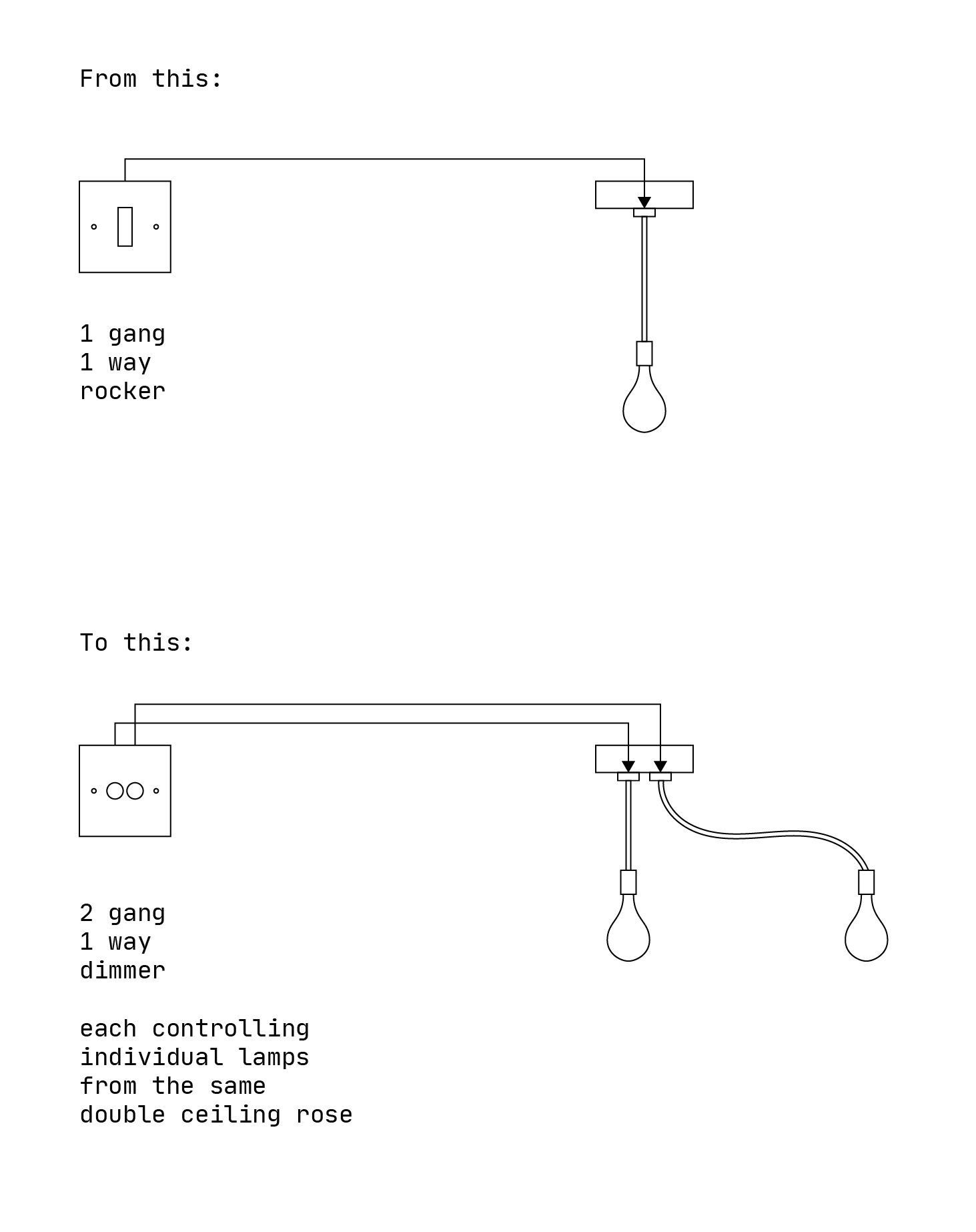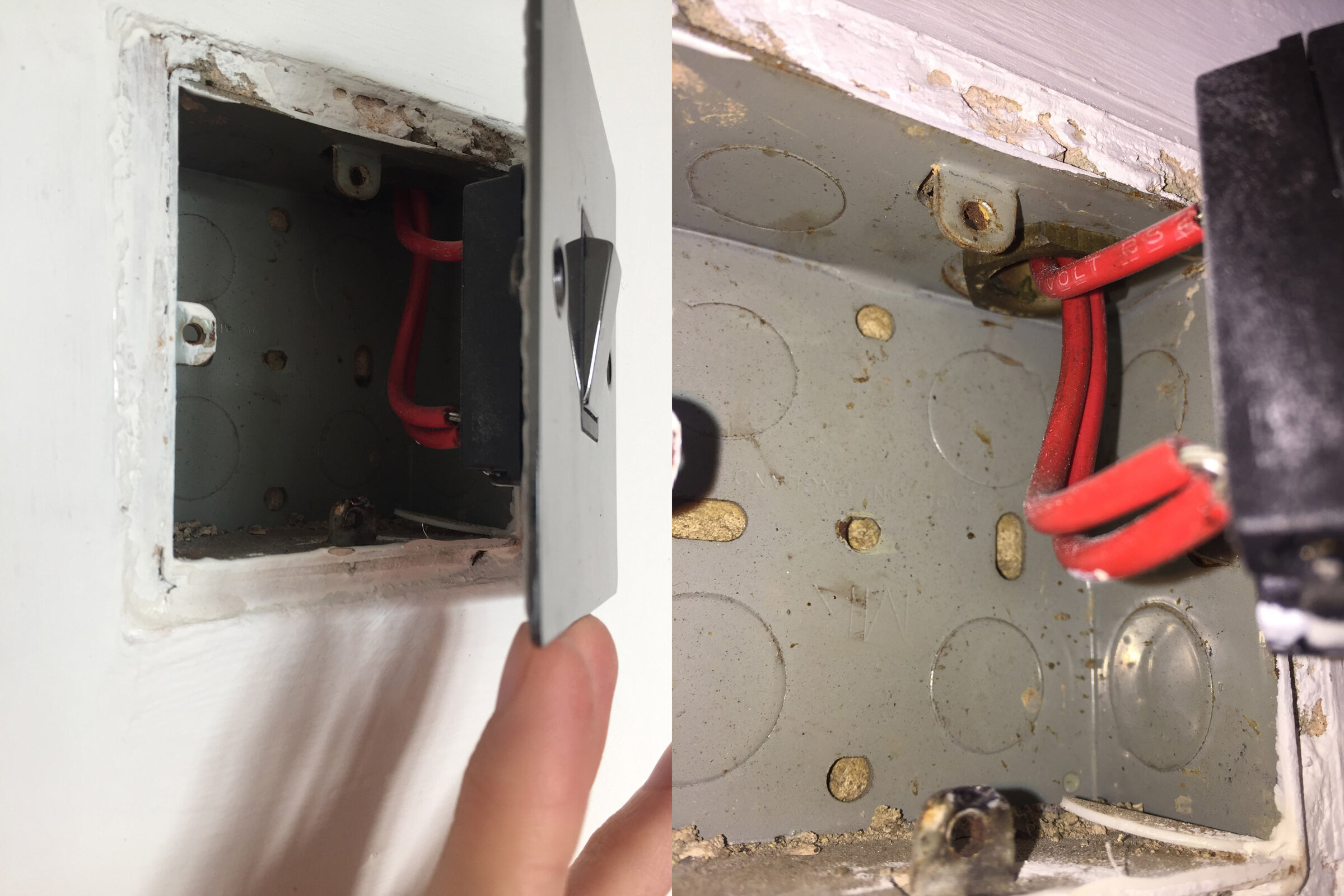- Joined
- 22 Jun 2021
- Messages
- 6
- Reaction score
- 0
- Country

Hi there.
Been researching but unable to find any answers. Wondering if what I want to do is even possible.
If it is, could it be done by someone with very little electrical know-how provided they were very dilligent and careful (ahem)?
If not, would it be a fairly simple job for an experienced electrician? I live in an ex-local authority flat, so I’m really hoping there is an answer that is simpler than rewiring the whole place.
The idea/problem:
I’m looking to replace my living room light: a ceiling rose with a single outlet controlled by a standard 1-gang 2-way rocker switch.
I’d like to replace this with a ceiling rose with two outlets controlled by a 2-gang dimmer. The reason for the 2-gang dimmer is because I want to control each lamp coming from the double rose as independent light sources.
This would allow me to have one lamp suspended in the middle of the room on a short flex for standard room illumination, and another lamp, on a longer flex, suspended via a hook above the dining table, for evening meals and working.
Hope this makes sense and thanks in advance for any/all advice. A very rudimentary picture is attached in case it makes it easier to see what I am hoping for.
Been researching but unable to find any answers. Wondering if what I want to do is even possible.
If it is, could it be done by someone with very little electrical know-how provided they were very dilligent and careful (ahem)?
If not, would it be a fairly simple job for an experienced electrician? I live in an ex-local authority flat, so I’m really hoping there is an answer that is simpler than rewiring the whole place.
The idea/problem:
I’m looking to replace my living room light: a ceiling rose with a single outlet controlled by a standard 1-gang 2-way rocker switch.
I’d like to replace this with a ceiling rose with two outlets controlled by a 2-gang dimmer. The reason for the 2-gang dimmer is because I want to control each lamp coming from the double rose as independent light sources.
This would allow me to have one lamp suspended in the middle of the room on a short flex for standard room illumination, and another lamp, on a longer flex, suspended via a hook above the dining table, for evening meals and working.
Hope this makes sense and thanks in advance for any/all advice. A very rudimentary picture is attached in case it makes it easier to see what I am hoping for.
Last edited by a moderator:


